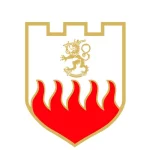Sub-officer degree | 60 credits | 1 year
Always on top of things
The rescue services’ Sub-officer degree programme lasts for two semesters (1 year) and confers eligibility to apply for sub-officer positions in rescue departments. Graduates of the Sub-officer degree programme are also eligible to apply to the Bachelor of Rescue Services programme.
Contact teaching takes place at the Emergency Services Academy in Kuopio, where the instruction, accommodation, and meals will be provided for the student free of charge.
The key modules of the programme include accident prevention, rescue service command, and personnel management.
Sub-officer job description
Fire station deputy managers working in sub-officer positions of a rescue department work as supervisors of their shift, commanders of rescue operations, planners and instructors of training exercises, fire inspectors, and educators and safety instructors. Fire station deputy managers lead the station service during their shift and are responsible for the planning and organisation of the station administration. Fire station deputy managers can also work as heads of smaller fire stations or in responsible expert positions in rescue departments.
Sub-officers’ tasks
In rescue operations, fire station deputy managers command the rescue team, but also larger formations until a fire officer arrives and assumes command.
Learning outcomes
Competence is based on professional content competence, good leadership skills, and the continuous development of professional skills. Fire station deputy managers are also required to have good communication skills: a good work climate and the motivation of shift crew form the basis for competence development.
Succeeding as a sub-officer
To succeed in their position, sub-officers must have good social and teamwork skills, good tolerance for conflicts and stress, logical reasoning and problem solving skills, and the ability to act and lead in different accident environments.
Admission criteria
The applicant must have passed a physical aptitude test and a medical examination at a test site designated by the Emergency Services Academy by the end of the application period at the latest. The test results are valid for 8 months.
As a basic educational requirement, applicants must have completed the Firefighter degree. Alternatively, the applicant must have completed a firefighter degree or similar qualification in accordance with previously valid rules and regulations at an educational rescue service institution, or the applicant must have, according to the assessment of the Emergency Services Academy, obtained the knowledge and skills required for the studies in some other manner.
The applicant must have the state of health and other qualities required for the proper performance of work duties.
The applicant must have the right to drive a category C vehicle.
Application procedure
The tuition is provided in Finnish. You can view the application procedure instructions on the Finnish website.
What kind of skills should the student have after completing the degree? The goal of the Sub-officer degree is for those who have completed the degree to
Developing preventers of accidents
understand the importance of the rescue department’s goal-oriented accident prevention work in developing the safety and security of citizens and society,
know how to plan and provide safety education for the needs of diverse client groups,
know how to carry out fire inspections in residential buildings, smaller properties equivalent to residential buildings, and common special properties, and how to guide the residents, operators, and personnel in these properties in independent safety monitoring (internal fire inspections)
know the implementation methods and principles of other regulatory control duties of the rescue authorities,
know how to encourage and motivate the personnel under their command in accident prevention,
know how to train their own personnel in the knowledge and skills required for accident prevention,
understand the use and significance of structural solutions and fire safety equipment in accident situations from the perspective of the occupational safety of the rescue team and rescue operation tactics,
be able to guide and advise citizens in solutions required by structural fire safety and in matters related to civil defence shelters in ordinary building types,
know the basic policies according to which rescue departments prepare for incidents under normal circumstances and unusual conditions.
Competent rescue operations commanders
master the most important technical equipment used in rescue operations so that they can educate and command their use as needed,
know how to command a rescue team in accident situations and are aware of the performance of the team,
know the principles of commanding a rescue platoon,
are familiar with the principles of headquarters operation and the tasks of cooperation authorities and their cooperation in accidents.
Encouraging human resources managers
know the principles of productive HR management in the work community,
understand the importance of well-being at work for the performance of the work community,
acknowledge the significance of self-management in management and is able to utilise feedback for developing their management skills,
know the key administrative tasks required of sub-officers,
know how to work as shift instructors, trainers of voluntary and part-time personnel, and as safety instructors for citizens.
Other objectives
know the importance of contract fire brigades as rescue service providers,
are prepared to build good partnerships with volunteers and part-time personnel.
Why become a sub-officer?
• Focus on management and safety
• The work is meaningful and carries a lot of responsibility
• Good employment opportunities
(rescue departments need fire station deputy managers)
• Average monthly salary approx. EUR 4,000
The Sub-officer degree confers eligibility for the position of a fire station deputy manager.
Watch the video on the Sub-officer degree
Content of studies
The Sub-officer degree programme curriculum is based on the diversifying tasks of sub-officers in rescue services. The objective is to train developing accident prevention experts who master the command of rescue operations and personnel management and are able to collaborate effectively with various stakeholders.
Degree breakdown by study units (60 credits / 1 year)
- Future-oriented reformer of their own vocational skills 12 credits
- Developing preventer of accidents 11 credits
- Competent rescue operations commander 28 credits
- Encouraging human resources manager 9 credits
Seuraa: @pelastusopisto #alipäällystötutkinto
Ykkösnyrkkinä pelastajakurssi 133 näytti nopeantoiminnan esimerkkiä taito harjoituksissa tikasselvityksestä.
#pelastusopisto #pelastajatutkinto #alipäällystötutkinto #palomies
Tero AP53

Ykkösnyrkkinä pelastajakurssi 133 näytti nopeantoiminnan esimerkkiä taito harjoituksissa tikasselvityksestä.
#pelastusopisto #pelastajatutkinto #alipäällystötutkinto #palomies
Tero AP53
Kansalaiset, odotuksen aika on ohi, sillä pelastajakurssi 133:n someagentit Riku ja Juuso ovat heränneet talviunilta. ⏰🐾
P133 pääsi talvilomilta palattuaan käsillä tekemisen makuun Pelastajan Perustaidot-kurssin taitoharjoitusten merkeissä.
Harjaannuimme mm. pumppu- ja tikaskaluston käytössä. Tästä suurin kiitos kuuluu AP53:lle, jonka opiskelijat vastasivat suurelta osin kouluttamisestamme.
Tuleva viikko vierähtääkin sitten P133:n osalta etäopiskelun parissa.
– Riku & Juuso / P133 (+ Tero AP53) #pelastusopisto #pelastajatutkinto #alipäällystötutkinto

Kansalaiset, odotuksen aika on ohi, sillä pelastajakurssi 133:n someagentit Riku ja Juuso ovat heränneet talviunilta. ⏰🐾
P133 pääsi talvilomilta palattuaan käsillä tekemisen makuun Pelastajan Perustaidot-kurssin taitoharjoitusten merkeissä.
Harjaannuimme mm. pumppu- ja tikaskaluston käytössä. Tästä suurin kiitos kuuluu AP53:lle, jonka opiskelijat vastasivat suurelta osin kouluttamisestamme.
Tuleva viikko vierähtääkin sitten P133:n osalta etäopiskelun parissa.
– Riku & Juuso / P133 (+ Tero AP53) #pelastusopisto #pelastajatutkinto #alipäällystötutkinto
Vain 6 viikkoa kesti, että alipäällystökurssin someagentti löysi lankapuhelimestaan jonkin somealustan johon päivittää "myday" minivideon etäopiskelusta työvuorossa.
#pelastusopisto
#palomies
#alipäällystötutkinto
#palomieshuumori🔥
#vaikeatyhdyssanat
AP53/Tero

Vain 6 viikkoa kesti, että alipäällystökurssin someagentti löysi lankapuhelimestaan jonkin somealustan johon päivittää "myday" minivideon etäopiskelusta työvuorossa.
#pelastusopisto
#palomies
#alipäällystötutkinto
#palomieshuumori🔥
#vaikeatyhdyssanat
AP53/Tero
Olimme mukana Karjalan prikaatin koulutusilta-tapahtumassa Vekaranjärven varuskunnassa. Hyviä keskusteluja alasta kiinnostuneiden varushenkilöiden kanssa👌
#pelastusopisto #pelastajatutkinto #hätäkeskuspäivystäjätutkinto #alipäällystötutkinto #päällystötutkinto

Olimme mukana Karjalan prikaatin koulutusilta-tapahtumassa Vekaranjärven varuskunnassa. Hyviä keskusteluja alasta kiinnostuneiden varushenkilöiden kanssa👌
#pelastusopisto #pelastajatutkinto #hätäkeskuspäivystäjätutkinto #alipäällystötutkinto #päällystötutkinto
Onnea Vuoden opettaja 2024!
Pelastusopiston Oppilasyhdistys nimitti vuoden opettajaksi tänä vuonna vanhempi opettaja Mika Smuran. Perusteluissa kerrottiin, että Mikalla on erityinen kyky inspiroida opiskelijoita oppimaan tunneillaan. Vankka alan kokemus ja pedagoginen osaaminen tekevät Mikasta erinomaisen ja arvostetun opettajan.
Mikan haastattelun voit lukea verkkosivujemme www.pelastusopisto.fi uutisosiosta.
#pelastusopisto #pelastustoiminta #johtaminen #pelastajatutkinto #alipäällystötutkinto #päällystötutkinto #vuodenopettaja

Onnea Vuoden opettaja 2024!
Pelastusopiston Oppilasyhdistys nimitti vuoden opettajaksi tänä vuonna vanhempi opettaja Mika Smuran. Perusteluissa kerrottiin, että Mikalla on erityinen kyky inspiroida opiskelijoita oppimaan tunneillaan. Vankka alan kokemus ja pedagoginen osaaminen tekevät Mikasta erinomaisen ja arvostetun opettajan.
Mikan haastattelun voit lukea verkkosivujemme www.pelastusopisto.fi uutisosiosta.
#pelastusopisto #pelastustoiminta #johtaminen #pelastajatutkinto #alipäällystötutkinto #päällystötutkinto #vuodenopettaja
👨🚒Alipäällystökurssi 52:n vaarallisten aineiden opintojakso kovaa vauhtia käynnissä. Eilen harjoiteltiin palavien nesteiden syttymisvaaran mittaamista talvisissa olosuhteissa, säiliöauton palavien nesteiden siirtopumppausta ja pumppulinjan maadoitusta.
.
.
.
.
#vaarallisetaineet
#pelastusopisto
#alipäällystötutkinto
#alipäällystökurssi52
Ap52
Jarkko & Mikko

👨🚒Alipäällystökurssi 52:n vaarallisten aineiden opintojakso kovaa vauhtia käynnissä. Eilen harjoiteltiin palavien nesteiden syttymisvaaran mittaamista talvisissa olosuhteissa, säiliöauton palavien nesteiden siirtopumppausta ja pumppulinjan maadoitusta.
.
.
.
.
#vaarallisetaineet
#pelastusopisto
#alipäällystötutkinto
#alipäällystökurssi52
Ap52
Jarkko & Mikko
Mitä sitä on tullut tehtyä tammikuussa? No, ainakin vaarallisten aineiden opintojakso on aloitettu. Yliopettaja Kyösti näyttää eri aineiden ilmiöitä. Samalla pohdimme, miten aineet käyttäytyvät onnettomuustilanteissa.
#pelastusopisto #alipäällystötutkinto
-Jarkko & Mikko Ap52

Mitä sitä on tullut tehtyä tammikuussa? No, ainakin vaarallisten aineiden opintojakso on aloitettu. Yliopettaja Kyösti näyttää eri aineiden ilmiöitä. Samalla pohdimme, miten aineet käyttäytyvät onnettomuustilanteissa.
#pelastusopisto #alipäällystötutkinto
-Jarkko & Mikko Ap52
Pääsimme jälleen avaamaan uuden lukukauden Pelastusopistolla. Alkava lukukausi on järjestyksessään 66.
Opintonsa aloittivat hätäkeskuspäivystäjäkurssi 46, pelastajakurssit 133–136 sekä alipäällystökurssi 53. Tervetuloa uudet opiskelijat ja hyvää alkanutta lukukautta kaikille!
Lue lisää osoitteesta: www.pelastusopisto.fi/uutisia/kevatlukukauden-avajaiset-ti-7-1-2025/
#pelastusopisto #pelastajatutkinto #hätäkeskuspäivystäjätutkinto #alipäällystötutkinto #päällystötutkinto #pelastustoimi #hätäkeskuslaitos

Pääsimme jälleen avaamaan uuden lukukauden Pelastusopistolla. Alkava lukukausi on järjestyksessään 66.
Opintonsa aloittivat hätäkeskuspäivystäjäkurssi 46, pelastajakurssit 133–136 sekä alipäällystökurssi 53. Tervetuloa uudet opiskelijat ja hyvää alkanutta lukukautta kaikille!
Lue lisää osoitteesta: www.pelastusopisto.fi/uutisia/kevatlukukauden-avajaiset-ti-7-1-2025/
#pelastusopisto #pelastajatutkinto #hätäkeskuspäivystäjätutkinto #alipäällystötutkinto #päällystötutkinto #pelastustoimi #hätäkeskuslaitos
Find out more
Student Affairs Office
Customer service:
Mon–Thu 8–14, Fri 8–13.
The Student Affairs Office is located in Building A, to the right of the entrance hall.
Degree programmes
Pirjo Paldanius
Student Affairs Secretary
Tel. 0295 453 490
tutkintokoulutus@pelastusopisto.fi



